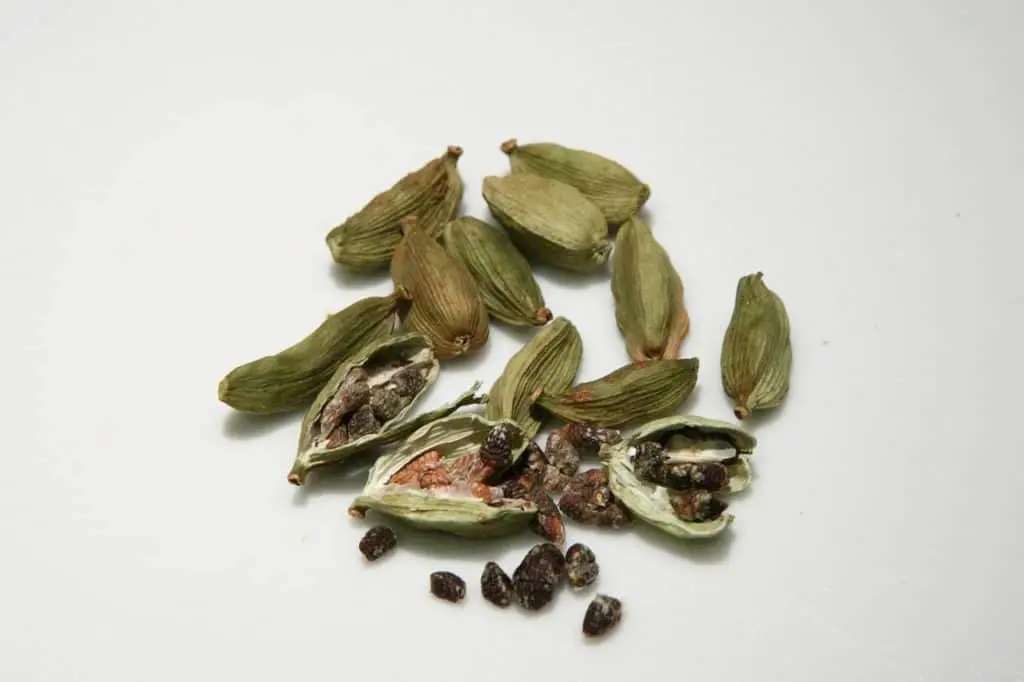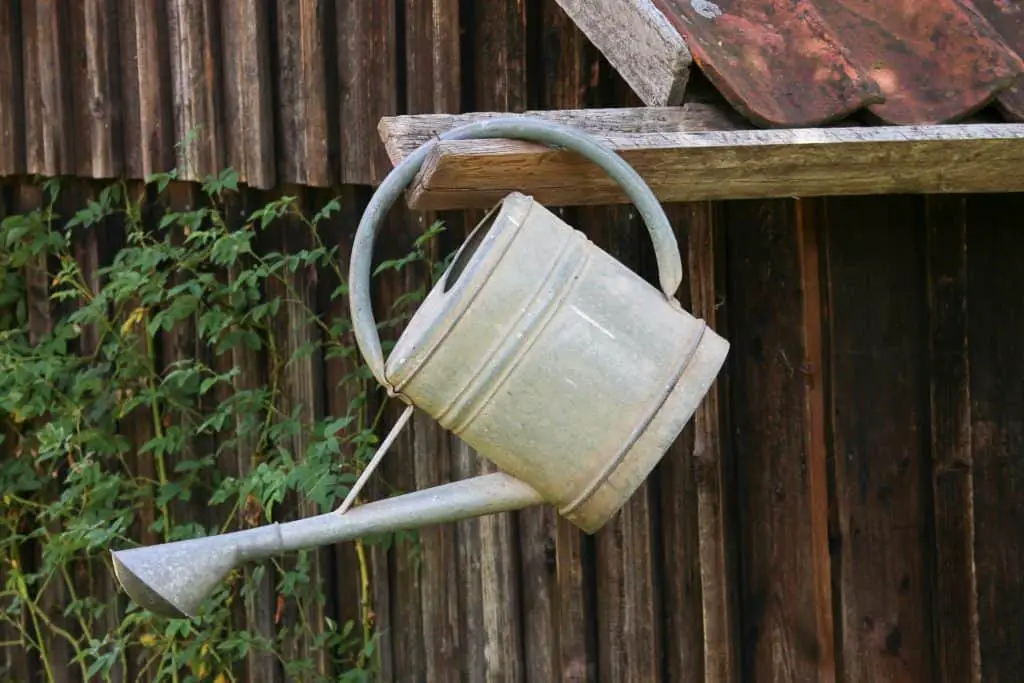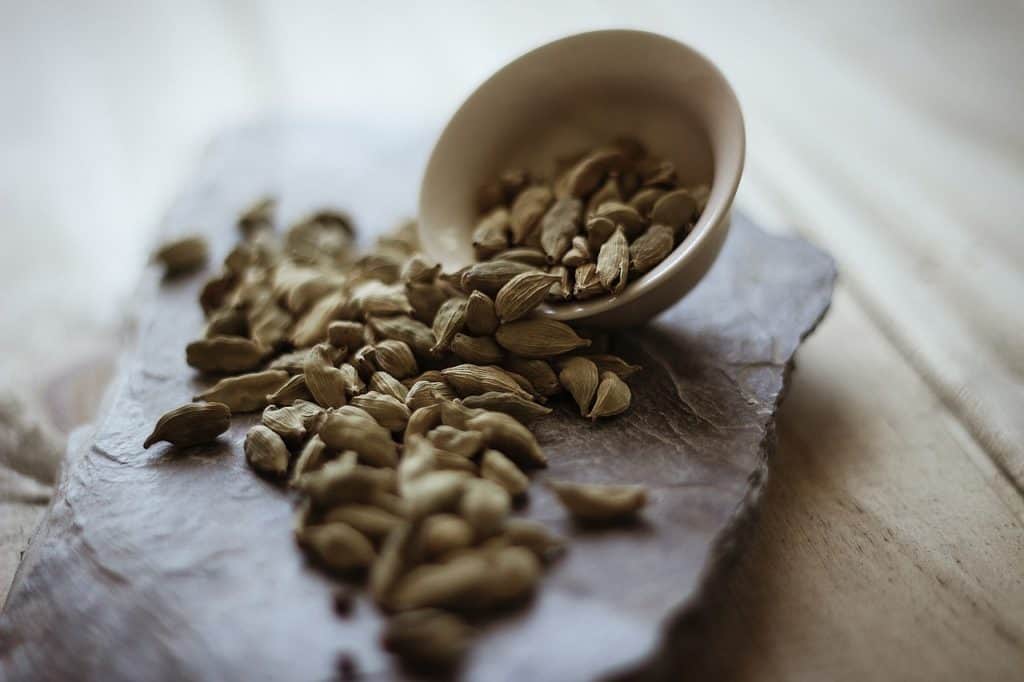This article will teach you everything about growing cardamon at home in a container, that you need to know.
Cardamon is considered a herb and is the third most expensive spice in the world.
Growing cardamom isn´t easy but it isn’t hard either. If you care correctly for the plant then you will be successful in growing your very own cardamon plant at home, and I will show you how to do so! Let’s get started!
Types Of Cardamom And Their Distribution
There are two main types of cardamon.
The Green Or True Cardamom
The green or true cardamom comes from the species Elettaria cardamomum.
This variety is mainly found in Malaysia and India.
When green cardamom is bleached, it’s referred to as white cardamom.
But what people refer to as white cardamom is a different species known as Siam cardamom; its scientific name is Amomum krervanh.
The Black Cardamom
Black cardamom comes by the names Nepal cardamom or longer, greater, brown, or large cardamom.
This variety belongs to the species Amomum subulatum, and it’s widely spread in eastern Nepal, some regions of Darjeeling district in West Bengal in India, Sikkim and southern Bhutan.
This variety has its roots in Eastern Himalayas.
Cardamom ranks as one of the most expensive spices in the world; it ranks third after vanilla and saffron.
How Do You Propagate Cardamom?

Cardamom can either be propagated from seeds or rhizomes.
When you decide to propagate cardamom via rhizomes, you’ll need to get your rhizomes and separate them from clumps of growing plants then plant them in containers or in pits.
With seeds, you can purchase them from your local garden store or extract the seeds from mature and ripe fruits in plants that are at least five years old.
After getting your seeds, you may sow them directly or mix them with ash and dry them before planting.
It’s easier to grow cardamom from rhizome than using seeds.
Use a sharp knife to harvest the rhizome from the mother plant. When choosing rhizomes, make sure the parent plant is free from diseases.
This is vital since diseases can spread from the mother plant to the rhizome. Preferably use rhizomes with two or more growing stems.
What Soil Do You Need To Grow A Cardamom Plant?

Cardamom seeds need to be planted in fertile and well-drained soil. Loamy soil that is rich in organic matter is the best for growing these herbs.
The soil should have a pH ranging between 5.0-6.5.
Cardamom seeds take longer to germinate usually 5-7 weeks, and they are ready for transplanting when they attain a height of 25-30cm.
Preparing Your Seeds For Planting.
Seeds take 2-3 months to germinate; thus, you must be patient if you use seeds to propagate cardamom.
If the seeds aren’t cared for, they may not germinate after this period. Before sowing the seeds, you must wash them thoroughly in warm water to detach the coat; dry the seeds.
Put cold water in a jar of water and immerse your cardamom seeds inside and allow them to settle in the water until they are cold to touch.
After this add a nitric solution (2.5%) to the seeds and stir the mixture. Let the seeds sit in this solution for a few minutes before draining them.
Ensure you rinse the seeds in warm water and put them in a bowl of lukewarm water for around 12 -24 hours. At this time your garden or seed trays should be ready.
How To Raise Cardamom Seedlings?
As we have seen before you can grow cardamom seedlings from rhizomes or seeds.
Although you can extract seeds from capsules you’ve purchased from your local store, it’s wise to use seeds from a licensed agricultural seeds supply company. This is critical to avoid pest and diseases that can ruin your cardamom.
Your local gardening supply store or online agricultural supply company should be able to supply you with the right seeds.
How To Sow Cardamom Seeds?
You can decide to sow your seeds directly into the container, or you can raise them in a nursery and transplant them later.
If you plan to transplant your seedling later, you can use a small container.
If the seedling will remain in the pot, use a container that is at least 10 inches wide.
The pot must have adequate drainage holes. Add high-quality potting soil to the container before planting your seeds.
You need to plant your seeds at a depth of 1/8 inch.
Place your seeds in the container and cover them to 1/8 inch with potting soil/ mix. Afterward, water your seedling tray or container to make sure the soil has adequate moisture.
You can plant as many seeds in your seedling tray or pot provided they are an inch apart.
Germination
In 30-45 days your cardamom seeds should start sprouting.
The plants will begin to poke up in the soil. You need to grow the seedlings in the nursery until they attain several true leaves.
Continue watering the seedlings until they are ready for transplantation.
How Do You Transplant Your Cardamom Seedlings?
Your cardamom seedlings are ready for transplanting when they have at least two real leaves.
Prepare a container that is at least 10 inches wide to transplant your seedlings. Make sure you add loamy soil to the pot or any other ideal potting mixture.
The potting soil should have sufficient amounts of organic matter; you can use aged manure or compost for this purpose.
When transplanting the cardamom seedlings, place the seedling in the pot with the root ball and add potting soil to the container until you’ve completely covered the root ball. Place your containers in a shaded area.
How Do You Water Your Cardamom Plant?

Water your plants regularly to ensure they have adequate moisture.
You should feel the top soil in the container to feel if you need to water the plants.
Every time you feel the top inches of soil in the pot is dry, you should water your plants.
Water the plants until you can see water seeping from the drainage holes.
During summer, your plants need to be watered more often due to the extreme temperatures — plan to water the cardamom plants regularly in this season.
The same applies to when the plants are fruiting; they need more water.
When watering ensure the soil is wet, but don’t overwater the plants. If the cardamom plants are waterlogged the plant may get diseases.
It’s also essential to reduce the amount of water on the plants during winter since they require less water.
How Do You Fertilize Cardamom?
During the growing season, you should fertilize your cardamom plants twice each month.
Select an organic fertilizer with a high content of phosphorus and nitrogen but low in potassium.
You need to spread the fertilizer around the plants base. Each year you need to add compost or aged manure to your plants.
Is The Location Of My Plant Important?
Yes, The Right Location for the cardamom plant is very important!
After transplanting your seedlings, you should move the pot to a warm spot, preferably in a sunny window.
The ideal temperature for your plants should be around 80 degrees.
Alternatively, you can use grow lights to support the growth of your cardamom plants.
What Grow Lights Should You Use For Your Cardamom?
With grow lights, you can start plants indoors when it’s too cold outside, especially during winter.
The grow lights will make sure your plants get adequate light each day thus avoid lengthening the period they’ll take to maturity.
When it’s too cloudy chilly or when there is more than enough shade, your cardamom plants will get sufficient light and warmth to keep them growing optimally.
When choosing lights for your indoor plants, make sure you go for lights made explicitly for supporting plant growth.
The main difference in grow lights you’ll find in the market is the size, cost, and light output.
Though you’ll find many grow lights in the market, let’s see three main grow lights you can use for your cardamom plants.
| Growing Light | Cost | Size | Efficiency |
|---|---|---|---|
| Typical Fluorescent Lights | Very Low | Medium to Small | Very Low (not realy recommended) |
| Compact Fluorescent Lights (CFL) | Medium | Small | Medium |
| High-Intensity Discharge (HID) | High | Medium | Very High |
| Led Lights | High | Medium to Large | Very High |
Typical Fluorescent Lights
You can get regular fluorescent lights in thrift shops and hardware stores in your locality.
The ordinary white fluorescent lights are the best if you want to use the least amount of money for this venture.
Although the regular fluorescent lights aren’t designed for indoor plants, hanging several of these lights over your cardamom plants will provide sufficient light to support the growth of these plants.
The light source should be in a maximum of 4 inches from the plants. Additionally, the light should hang directly over the plants.
Fluorescent grow lights are the most affordable lights that support plant growth indoors. Ensure your cardamom plants are 2-4 inches underneath the light for maximum benefits.
These lights are ideal for your cardamom plants, especially during winter or any other season when your indoor plants can’t access sufficient light.
Compact Fluorescent Lights (CFL)
Besides the ordinary fluorescent lights, the compact fluorescent lights are another affordable pick for your indoor plants.
Although they are affordable, they can offer 92% natural sunlight spectrum that the cardamom plants will utilize.
As the name describes, these compact fluorescent lights are smaller than ordinary fluorescent lights.
They come in perfect sizes for your growing area. Additionally, unlike the traditional fluorescent lights, you don’t need to hand several of the lights in your growing area, one light is sufficient.
T5 is one of the most popular CFL used for indoor plants; it has become a favorite for many since it has several thinner bulbs fixed in a vertical direction.
Other common CFL’s use for indoor plants include Gro-Lux, Sylvania and Vita-Lites
High-Intensity Discharge (HID)
They are quite expensive but they are also the most cost-efficient growing lights.
The reason for this cost difference is that HID lights discharge a high intensity of light, double what the fluorescent lights discharge.
For example, it will require 880 watts for a fluorescent light to generate the same output as one 400watt high-intensity discharge lamp.
Types Of HIDs
The two main types of HIDs are the Metal Halide (MH) and the High-Pressure Sodium (HPS).
The MH discharges a midday sun heat that is vital for the development of foliage in your cardamom.
On the other hand, the HPS emits early morning and late afternoon sun heat with a range of spectrums that is suitable for flowering and the fruiting stage for indoor plants.
If you don’t receive natural light in your area, deeding on the season, then HIDs are the perfect solution since they’ll supplement both sunroom and greenhouses.
Led Growing Lights
Led growing lights are the most expensive of the four lights listed here but they are also the most durable lights of the four.
They come in a lot of different forms and sizes and they are generally very good for most plants out there, including cardamom.
And another plus, they don´t need as much power as the other lights!
Pests And Disease Affecting Cardamom Plants
When growing cardamom in containers, you also need to know how to protect them from pest and diseases.
You must make sure your cardamom plants are healthy at all time to limit pests and diseases.
If you see aphids on your cardamom plants, for example, the Cardamom mosaic virus can strike at any time.
The best way of preventing diseases from attacking your plants is by avoiding waterlogging the cardamom plants. Overwatering will result in rotting of the rhizomes.
Additionally, you should avoid growing your plants under direct sunlight to limit the development of brown spots. Fertilizing the plants regularly is also crucial to prevent iron deficiency that presents as yellowing of the leaves.
The Common Disease Affecting Cardamom Plants
Highly humid and warm conditions present a challenge when growing cardamom. These are the perfect conditions for the growth of bacteria and fungi that attack cardamom plants.
Capsule rot is one of the diseases affecting cardamom; it results in lesions on the plants, causing them to wilt and produce a pungent smell.
This condition is caused by a fungus that thrives in warm and wet conditions. When you observe capsule rot in your plants, you should reduce the amount of water besides exposing the plant to more sunlight.
Another disease affecting cardamom is rhizome rot or damping-off.
This disease occurs due to a fungus that thrives in the same conditions as capsule rot. When you not this condition in your cardamom plants, remove and destroy the affected plants. You may use a fungicide if necessary.
How Do You Harvest Cardamom?

It‘ll take you 2-4 years before you can harvest anything from cardamom plants.
These plants produce yellow flowers. And mainly blossom at the start of April or May and continue flowering through July and August.
The flowers develop into capsules that hold 15-20 seeds. It’s also important to know some plants may take 4-5 years before fruiting.
Thus you’ll need to take good care of your cardamom plants to ensure they mature without delay.
Although the cardamom plants flower early in the year, you should wait until October or November to harvest the fruits.
After harvesting your cardamom capsules, you should dry them for 6-7 days.
After this process, you can store the cardamom pods in airtight containers. These containers need to be stored in cool, dry locations away from dry sunlight to ensure you’ll enjoy your cardamom longer.
Extracting The Seeds The Right Way
Once the pods are dry, it’s easier to break open and collect the seeds. Place your pod in an open container such as a bowl or basin and crush the pods gently to extract the dry seeds.
Use a small fan to separate the seeds from the chaff.
You can also separate the seeds from the chaff using a medium screen. Shake the screen back and forth to eliminate the extraneous matter.
Collect your seeds and store them in an airtight container in a cool, dry place.

